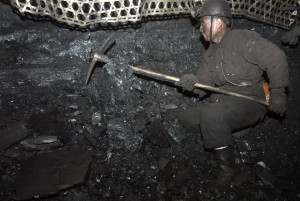What Is Coal Mining
Coal miners literally move mountains to feed our insatiable appetite for cheap energy.
There’s something brutally simple about coal mining. Take away the monstrous new machinery and eco-friendly marketing jargon and it’s the same dirty, dangerous job it’s always been: find the black stuff and dig it up.
The two major schools of coal mining are surface mining and underground mining. To qualify for surface mining, the coal seam must lie within 60 metres of the surface. The miners’ job is to remove all of the ‘overburden’ – the cubic tons of rock, soil and trees above the coal seam -and expose the coal layer for extraction. The main tools of the trade are dynamite and dragline excavators, 2,000-ton behemoths that can move 450 tons of material with one swoop of their massive buckets.
Perhaps the most dramatic and controversial surface mining technique is Mountaintop Removal (MTR), in which miners use explosives and heavy machinery to literally knock the top off a mountain – up to 200 metres below the peak – to get at the rich coal beds beneath.
Underground mining is decidedly more difficult and dangerous. In smaller mines, workers still use conventional methods, blasting and digging out large “rooms’ supported by thick “pillars’ of untouched coal. But that won’t cut it for modern mining operations that regularly remove over 100 megatons (1 million tons) of raw coal each year.
 The go-to machine of the highvolume coal mine is a continuous miner. This long, low-slung machine rips through coal faces with a wide rotating drum armed with hundreds of drill bits. Each bit is sprayed with a fine mist of water, cooling the cutting surface and neutralizing coal dust emissions. Using built-in conveyors, the machine rolls the coal off its back, where it’s transported to the surface by haulers or conveyor belts.
The go-to machine of the highvolume coal mine is a continuous miner. This long, low-slung machine rips through coal faces with a wide rotating drum armed with hundreds of drill bits. Each bit is sprayed with a fine mist of water, cooling the cutting surface and neutralizing coal dust emissions. Using built-in conveyors, the machine rolls the coal off its back, where it’s transported to the surface by haulers or conveyor belts.
Types of coal mine
Shaft mine – Miners and equipment are transported down vertical shafts hundreds or thousands of metres deep to access fertile coal seams.
Drift mine – The simplest method of underground mining, the coal seam is accessed by digging horizontally into the side of a hill.
Slope mine – For a shallow underground coal seam, miners dig a slanted or ‘sloped’ shaft and remove the coal via long convey orbelts.
Surface mine – In a surface mine (or strip mine), miners remove a horizontal layer of soil and rock called the overburdento expose a coal seam.
![Top 5 facts about Coal Mining]() Top 5 facts about Coal Mining
Top 5 facts about Coal Mining
1. Worldwide production – Back in 2008, the world’s coal mines produced 5,845 megatons of black coal and 951 megatons of brown coal. Makes you wonder how long it’s going to last, doesn’t it?
2. The coal king – China is by far the largest coal producer in the world with a staggering 18,557 mines. To compare, the United States has 1,458 mines and the UK has just 46.
3. Old friend steel – The steel industry is one of the heaviest consumers of coal. Worldwide steel plants burned 1,327Mt of coal – in its purified form called coke – in 2008.
4. Let there be light – Over 40 per cent of the world’s electricity is provided by coal. China burns coal for 81 per cent of its electricity, while the US uses coal for 49 per cent of its electricity.
5. Super scrapers – A continuous mining machine can extract eight tons of coal per minute. Some quick maths will tell you that’s 480 tons an hour, 11,520 tons a day and 4.2 million tons a year.

